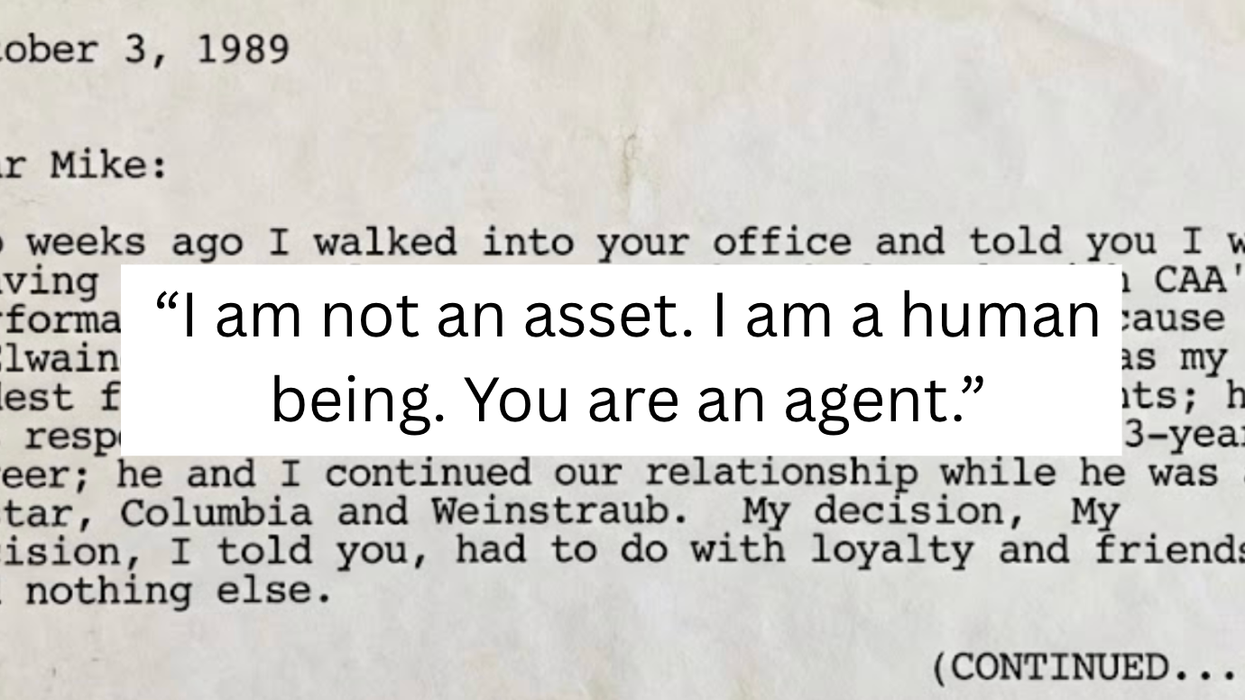With one of the country's most notorious slums sitting within spitting distance of new million-dollar lofts and five-star hotels, Los Angeles is using tough new policing to clean up its worst eyesore. For the children of Skid Row, though, it's business as usual-finding shelter, trying to stay out of trouble, and most of all, getting out.Cesar Hurtado can't sit still. Eyes darting, feet tapping, knees knocking, the wiry 12-year-old is bouncing around the community room at the Union Rescue Mission shelter in downtown Los Angeles at breakneck speed, telling a joke a minute and bursting into convulsive fits of giggles until something on TV catches his eye. He plants himself down on the vinyl couch between his two little brothers, temporarily hypnotized by Bruce Willis."Hey! Let me see your phone," he says, snatching my Sidekick from my jacket pocket as his brothers look on. "You got any new games on that?" His mother, Mariann Andrade, noisily repositions herself at a nearby table, a preemptive warning to the boys to simmer down. She's exhausted. For three years now, she and her four children have been trekking from South Central to North Hollywood, between shelters, missions, and low-rent hotels, which she pays for with vouchers provided by the county. Now they share a sparsely furnished dormitory room with another family at one of Skid Row's three megashelters. "I might be going to my grandma's soon," Cesar whispers.
| Quote: |
| It's scary. There's drugs and killing and stuff. I don't go out alone.-Cesar Hurtado, 12 |
 Cesar Hurtado, in conversation with LAPD Commander Andrew Smith at the Central Division Police Station More recently, the buzz has been about the cleanup in the area. In September 2006, the Safer Cities Initiative deployed 50 new cops on loan from other divisions to target drug crimes and so-called quality-of-life crimes like public urination and jaywalking. Critics worry that the initiative, a partnership among the LAPD, the Mayor's office, the City Attorney, and the Central City East Association, a nonprofit advocacy group for property owners, is a lot of one-time money with solutions that don't address the root problems. That being said, the numbers are looking good. "Crime is down 30 percent," says Commander Smith. "The homeless population in Skid Row is down significantly ... and we have made 7,500 narcotics and parolee arrests since Safer Cities was implemented, on September 18, 2006."
Cesar Hurtado, in conversation with LAPD Commander Andrew Smith at the Central Division Police Station More recently, the buzz has been about the cleanup in the area. In September 2006, the Safer Cities Initiative deployed 50 new cops on loan from other divisions to target drug crimes and so-called quality-of-life crimes like public urination and jaywalking. Critics worry that the initiative, a partnership among the LAPD, the Mayor's office, the City Attorney, and the Central City East Association, a nonprofit advocacy group for property owners, is a lot of one-time money with solutions that don't address the root problems. That being said, the numbers are looking good. "Crime is down 30 percent," says Commander Smith. "The homeless population in Skid Row is down significantly ... and we have made 7,500 narcotics and parolee arrests since Safer Cities was implemented, on September 18, 2006."| Quote: |
| We have made 7,500 narcotics and parolee arrests since Safer Cities was implemented.-LAPD Commander Andrew Smith |
 Franklin Aburtha stands on San Julian Street in downtown Los Angeles. The 16-year-old, though very handsome, carries the mark of a childhood on Skid Row. In contrast to Cesar's optimism, Franklin has internalized his surroundings. A few years ago, he saw his neighbor Doris stabbed to death from his balcony at the nefarious Ford Hotel, where he and his three sisters, little brother, and mother shared two rooms after they left the mission. "Yeah, I saw her get stabbed like 16, 17 times, I think," he says. "Everybody just watched. Nobody did nothing, except the guy from the taco truck. He tried."The hotel where Franklin and his family lived for five years is a well-documented hellhole of active addiction, parolees, and general toxic disturbance. The hotel, with 295 grimy rooms, was built in 1925. It has been a frequent target of the city's slum task force. In 1999, it was declared a public nuisance.After Franklin saw Doris stabbed to death, he picked up a camera and shot a documentary called We're Not Bad Kids. He's been a guest on The Montel Williams Show and Tyra Banks, featured on CNN, NBC, in the Los Angeles Times, and on the cover of LA Weekly. He had his own online channel on WOW TV, a video-hosting venture by WOW Production called Kids Row, a series that he shot himself. Still, he's a bit of a ticking time bomb-there's no telling where the pieces will land. "I know, I know," he says. "It's just the way my life is. I guess I got it from OGs … older cats I hung out with. Gangsters, pretty much. They don't hold nothing back. Most of them'll fire on you in a quickness."
Franklin Aburtha stands on San Julian Street in downtown Los Angeles. The 16-year-old, though very handsome, carries the mark of a childhood on Skid Row. In contrast to Cesar's optimism, Franklin has internalized his surroundings. A few years ago, he saw his neighbor Doris stabbed to death from his balcony at the nefarious Ford Hotel, where he and his three sisters, little brother, and mother shared two rooms after they left the mission. "Yeah, I saw her get stabbed like 16, 17 times, I think," he says. "Everybody just watched. Nobody did nothing, except the guy from the taco truck. He tried."The hotel where Franklin and his family lived for five years is a well-documented hellhole of active addiction, parolees, and general toxic disturbance. The hotel, with 295 grimy rooms, was built in 1925. It has been a frequent target of the city's slum task force. In 1999, it was declared a public nuisance.After Franklin saw Doris stabbed to death, he picked up a camera and shot a documentary called We're Not Bad Kids. He's been a guest on The Montel Williams Show and Tyra Banks, featured on CNN, NBC, in the Los Angeles Times, and on the cover of LA Weekly. He had his own online channel on WOW TV, a video-hosting venture by WOW Production called Kids Row, a series that he shot himself. Still, he's a bit of a ticking time bomb-there's no telling where the pieces will land. "I know, I know," he says. "It's just the way my life is. I guess I got it from OGs … older cats I hung out with. Gangsters, pretty much. They don't hold nothing back. Most of them'll fire on you in a quickness." Today is the first time Franklin's been back on Skid Row since his family moved to South Los Angeles two months ago. He was eager to come back for this meeting, and to check in with some old friends. "It's a little different now," he says of the visibly cleaner streets. "It's better than it's used to be."This is Andrew Smith's turf. An outgoing, press-savvy communicator, he was handpicked by Chief Bratton to be the face of the new Skid Row. The people here know him. There's an understanding and a mutual respect. A few months ago, San Julian Street looked like Calcutta, with people shooting drugs into open wounds on the sidewalk, smoking crack, some half-dressed. It's better now.Joined by Franklin and Cesar, the commander walks the block of San Julian Street between 6th and 7th Streets in full dress uniform. Franklin looks a little shell-shocked. Once you've seen Paris, or at least South Central, you can't go back to the farm. Cesar, on the other hand, is having a blast doing jumping jacks in the middle of the street, running up and down the block. When cops appear on horseback he looks like he won the lottery, oblivious to the skeletal woman with a Jeri curl sitting on the curb examining the area around an abscess on her ankle, presumably checking for a working vein."I'm blessed," says a shirtless black man with wild eyes in response to my "How are you doing?" It's a sentiment you hear down here all the time, an area that seems to have more God per square inch than any other place in the greater Los Angeles area-a preacher in every parking lot, two Buddhist temples, and a lot of churches. The gutter is littered with garbage: discarded clothes, a Styrofoam plate of rice and beans. Between the missions that provide thousands of meals a day and Christian do-gooders who show up in vans and buses serving up sandwiches and hot meals, there is definitely no shortage of free food and clothes.Franklin runs into an old friend, a 30-something thuggish black guy whose skin has the telltale balmy texture of long-term anti-psychotic medication. Commander Smith lets Cesar test-drive his baton while they talk, stopping briefly to chat with a woman in a bathrobe propped up against LAMP Village, a long-term shelter for severely mentally challenged people on San Julian. He listens intently to her incomprehensible rant. He's seen a lot down here, but more than the cops, it's the caregivers who see it all.
Today is the first time Franklin's been back on Skid Row since his family moved to South Los Angeles two months ago. He was eager to come back for this meeting, and to check in with some old friends. "It's a little different now," he says of the visibly cleaner streets. "It's better than it's used to be."This is Andrew Smith's turf. An outgoing, press-savvy communicator, he was handpicked by Chief Bratton to be the face of the new Skid Row. The people here know him. There's an understanding and a mutual respect. A few months ago, San Julian Street looked like Calcutta, with people shooting drugs into open wounds on the sidewalk, smoking crack, some half-dressed. It's better now.Joined by Franklin and Cesar, the commander walks the block of San Julian Street between 6th and 7th Streets in full dress uniform. Franklin looks a little shell-shocked. Once you've seen Paris, or at least South Central, you can't go back to the farm. Cesar, on the other hand, is having a blast doing jumping jacks in the middle of the street, running up and down the block. When cops appear on horseback he looks like he won the lottery, oblivious to the skeletal woman with a Jeri curl sitting on the curb examining the area around an abscess on her ankle, presumably checking for a working vein."I'm blessed," says a shirtless black man with wild eyes in response to my "How are you doing?" It's a sentiment you hear down here all the time, an area that seems to have more God per square inch than any other place in the greater Los Angeles area-a preacher in every parking lot, two Buddhist temples, and a lot of churches. The gutter is littered with garbage: discarded clothes, a Styrofoam plate of rice and beans. Between the missions that provide thousands of meals a day and Christian do-gooders who show up in vans and buses serving up sandwiches and hot meals, there is definitely no shortage of free food and clothes.Franklin runs into an old friend, a 30-something thuggish black guy whose skin has the telltale balmy texture of long-term anti-psychotic medication. Commander Smith lets Cesar test-drive his baton while they talk, stopping briefly to chat with a woman in a bathrobe propped up against LAMP Village, a long-term shelter for severely mentally challenged people on San Julian. He listens intently to her incomprehensible rant. He's seen a lot down here, but more than the cops, it's the caregivers who see it all. From right: Cesar Hurtado; William Menjivar, a volunteer at Los Angeles Men's Project; and a resident of Skid Row William Menjivar is a caseworker at LAMP. Now 30 years old, he sought out Skid Row as a teenager, sleeping in the streets and feeding a heroin addiction. Having turned himself around, the Salvadorian-born Menjivar has seen both sides of the curb. He nods to Smith as he walks through the shelter courtyard."I been in the cut down here since I was strung-out kid," says Menjivar. "These people, I know most of them by name by now. Down here are people doing things I still can't believe, even though I see it every day. They're living like animals, right by all the million-dollar lofts and all the yuppies practically running them over in their Beemers and Benzes. It's America. That's how we do it. At lease they're not dumping people here as much anymore."
From right: Cesar Hurtado; William Menjivar, a volunteer at Los Angeles Men's Project; and a resident of Skid Row William Menjivar is a caseworker at LAMP. Now 30 years old, he sought out Skid Row as a teenager, sleeping in the streets and feeding a heroin addiction. Having turned himself around, the Salvadorian-born Menjivar has seen both sides of the curb. He nods to Smith as he walks through the shelter courtyard."I been in the cut down here since I was strung-out kid," says Menjivar. "These people, I know most of them by name by now. Down here are people doing things I still can't believe, even though I see it every day. They're living like animals, right by all the million-dollar lofts and all the yuppies practically running them over in their Beemers and Benzes. It's America. That's how we do it. At lease they're not dumping people here as much anymore."| Quote: |
| [People are] living like animals, right by all the…yuppies practically running them over in their Beemers and Benzes. It's America. That's how we do it.-William Menjivar |
 Back in the interrogation room at Central Division police station, Cesar is calling the shots. Franklin recognizes a black guy in handcuffs shackled to a bench and says hello. Cesar, mesmerized by the commander's gleaming badge, is confident about his future career as a cop. "I'm gonna be a cop," he tells Smith. "Good. Stay out of trouble and don't drink or take drugs," Smith says."I think you should do better," Cesar says flatly. "I wanna take all the crime off the streets." By most accounts, the commander has done an admirable job. "The numbers tell the story," Smith says. "We went from 1,850 people living in boxes in my area, five square miles of downtown. Now there's about 750. We did a good job on the Fifth and Hill gang. We arrested about 30 of those guys, seized five pounds of heroin, a quarter million dollars." That's a marked accomplishment and a lot of drug money out of circulation, but how quickly that will translate into lasting change for the area's residents is hard to guess. For now, Cesar's mother is thinking of splitting the family up while she works out their living situation. She is engaged in a series of complicated maneuvers to secure Section 8 housing, a type of federal assistance provided by the United States Department of Housing and Urban Development that sponsors subsidized housing for low-income families and individuals.After living in the hotel, they'll be placed in temporary housing before qualifying for something called permanent affordable housing. They're on the fast track, working through a nonprofit organization called Beyond Shelter, which helps move homeless families into permanent affordable housing in months, instead of a few years. But if one element falls through-a meeting missed, a document not received-Cesar's family could go to the back of the line.The fear in his mother's face is an easy read; she knows they need to get out of here soon or Cesar's glow will dim. The stories in Skid Row are almost always the same: domestic violence, addiction, illness, incarcerated husbands, missed appointments, and canceled benefits. With no place left to go and no resources, this is where people end up. It's the last stop, made up of the people at the bottom. Franklin already knows it. He's not happy about it. Cesar will figure it out soon enough. For the moment he doesn't seem to care. He's still 12.For now he talks about his future as though he's already left this place-as though he and his family aren't part of this community stuck in a holding pattern. "I wanna help people who can't take care of themselves," he says. "I'm going to get the guns and drugs off the street. I'm gonna do a better job than they did."
Back in the interrogation room at Central Division police station, Cesar is calling the shots. Franklin recognizes a black guy in handcuffs shackled to a bench and says hello. Cesar, mesmerized by the commander's gleaming badge, is confident about his future career as a cop. "I'm gonna be a cop," he tells Smith. "Good. Stay out of trouble and don't drink or take drugs," Smith says."I think you should do better," Cesar says flatly. "I wanna take all the crime off the streets." By most accounts, the commander has done an admirable job. "The numbers tell the story," Smith says. "We went from 1,850 people living in boxes in my area, five square miles of downtown. Now there's about 750. We did a good job on the Fifth and Hill gang. We arrested about 30 of those guys, seized five pounds of heroin, a quarter million dollars." That's a marked accomplishment and a lot of drug money out of circulation, but how quickly that will translate into lasting change for the area's residents is hard to guess. For now, Cesar's mother is thinking of splitting the family up while she works out their living situation. She is engaged in a series of complicated maneuvers to secure Section 8 housing, a type of federal assistance provided by the United States Department of Housing and Urban Development that sponsors subsidized housing for low-income families and individuals.After living in the hotel, they'll be placed in temporary housing before qualifying for something called permanent affordable housing. They're on the fast track, working through a nonprofit organization called Beyond Shelter, which helps move homeless families into permanent affordable housing in months, instead of a few years. But if one element falls through-a meeting missed, a document not received-Cesar's family could go to the back of the line.The fear in his mother's face is an easy read; she knows they need to get out of here soon or Cesar's glow will dim. The stories in Skid Row are almost always the same: domestic violence, addiction, illness, incarcerated husbands, missed appointments, and canceled benefits. With no place left to go and no resources, this is where people end up. It's the last stop, made up of the people at the bottom. Franklin already knows it. He's not happy about it. Cesar will figure it out soon enough. For the moment he doesn't seem to care. He's still 12.For now he talks about his future as though he's already left this place-as though he and his family aren't part of this community stuck in a holding pattern. "I wanna help people who can't take care of themselves," he says. "I'm going to get the guns and drugs off the street. I'm gonna do a better job than they did."















 Otis knew before they did.
Otis knew before they did.